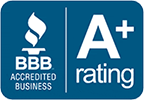Navigating the path to roof replacement can be a daunting task, laden with variables that can impact the project's success and cost. Whether you're facing emergency storm damage or playing out a proactive home maintenance plan, this comprehensive guide is here to demystify the process. We will provide you with invaluable insights into cost estimation, finding the right contractor, and essential tips for seamless roof replacement. Grab hold of peace of mind as we pass down our wisdom to ensure your next roofing project is a stress-free triumph.
During roof replacement, the existing roofing materials will be removed and replaced with new ones. The process typically involves an initial inspection, removal of old materials, installation of underlayment and flashing, installation of the new roofing materials, and a final inspection to ensure everything is installed correctly. For more detailed information or to get an estimate for your specific needs, contact a licensed and experienced roofing contractor.
Determining the Need for Roof Replacement
Determining whether your roof needs to be replaced is a crucial first step in the process. While it may seem obvious if you notice leaks or missing shingles, there are other signs that you should look out for. Keep an eye out for:
- Age of the Roof: Most roofing materials have a limited lifespan. For example, asphalt shingle roofs typically last between 20 to 25 years. If your roof is approaching or has surpassed its expected lifespan, it may be time to consider a replacement.
- Visible Damage: Inspect your roof for signs of visible damage, such as missing, cracked, or curled shingles. Damaged flashing around chimneys, vents, and skylights can also indicate a need for replacement.
- Water Leaks: If you notice water stains on your ceiling or walls, it could be a sign of a leaky roof. Address these issues promptly before they cause further damage to your home's interior.
- Granule Loss: Check your gutters and downspouts for excessive amounts of granules. Asphalt shingles tend to lose more granules towards the end of their life cycle, indicating wear and tear.
- Sagging Roof Deck: From inside the attic, inspect your roof deck for any sagging or unevenness. This could be indicative of structural issues that require immediate attention.
- Energy Efficiency Concerns: If you notice increased energy bills or have difficulty maintaining a consistent temperature in your home, it could indicate inadequate insulation due to an aging roof.
- Interior Issues: Look out for signs of moisture damage on walls, peeling paint or wallpaper, blistering or bubbling, and mold growth—all potential indications of a failing roof.
Remember that while some issues may be visibly apparent, others may require a professional inspection. Consulting with a reputable roofing contractor can help you accurately assess the condition of your roof and determine if it needs to be replaced.
Selection of a Roofing Contractor
Selecting the right roofing contractor is crucial in ensuring that your roof replacement project is completed professionally and without any unforeseen issues. Here are some essential considerations when evaluating roofing contractors:
- Experience and Expertise: Look for contractors with extensive experience in roof replacement. A well-established company with a proven track record is more likely to handle your project effectively.
- Licensing and Insurance: Ensure that the contractor holds all necessary licenses and certifications required by your state or local authorities. Additionally, ask for proof of insurance, including general liability coverage and workers' compensation, to protect yourself from any liability during the project.
- Portfolio and References: Request a portfolio of their previous work to gauge the quality of their craftsmanship. Additionally, ask for references from past clients and take the time to reach out to them to inquire about their experience working with the contractor.
- Written Estimates: Obtain at least three written estimates from different contractors, outlining the scope of work, materials needed, labor costs, and estimated timeline for completion. This will help you compare prices and make an informed decision based on thorough evaluation.
- Warranty and Guarantees: Inquire about warranties offered by the contractor for both materials and workmanship. Reputable contractors often provide warranties to ensure customer satisfaction and offer reassurance regarding the longevity of your new roof.
- Professional Communication: Evaluate how well the contractor communicates with you throughout the process. Clear communication is vital in understanding project details, addressing concerns, and ensuring a successful and stress-free experience.
By considering these factors when selecting a roofing contractor, you can ensure that your roof replacement project is in capable hands. Remember, taking the time to research and choose the right contractor will lead to a successful installation and peace of mind for years to come.
Evaluating Professional Credentials
When it comes to roof replacement, ensuring that you hire a qualified and reputable contractor is of utmost importance. Evaluating professional credentials can help you make an informed decision and avoid potential issues down the line.
A good starting point is to verify if the roofing contractor is licensed and insured. Licensing requirements vary by state, so research your local regulations to understand what credentials are necessary. A licensed contractor demonstrates that they have met certain standards set by the industry or governing body, giving you peace of mind regarding their expertise.
Insurance is another crucial aspect to consider. Make sure the contractor has both liability insurance and worker's compensation coverage. Liability insurance protects you in case any damage occurs during the project, while worker's compensation coverage ensures that you won't be held liable for any injuries sustained by workers on your property.
In addition to licensing and insurance, it's essential to assess a contractor's reputation. Look for reviews and testimonials from previous customers, as well as any accreditations or awards they may have received. Online platforms like Angie's List or the Better Business Bureau are great resources for checking a contractor's reputation and customer satisfaction levels.
Furthermore, evaluate the contractor's experience in roof replacement specifically. Ask about the number of years they have been in business and inquire about their track record with similar projects. A seasoned roofer with a proven track record is more likely to deliver quality workmanship.
Lastly, don't hesitate to ask for references. Contact previous clients to get firsthand feedback about their experience working with the contractor. This will provide valuable insights into their professionalism, communication skills, timeliness, and overall satisfaction with the completed project.
Remember, evaluating professional credentials may take some time and effort, but it is an essential step in ensuring a successful roof replacement project. By selecting a qualified and reputable contractor, you can have peace of mind knowing that your investment is in safe hands.
Ensuring Adequate Inspection and Cost Estimation
Once you have identified a reputable contractor, the next step in the roof replacement process is ensuring an adequate inspection and accurate cost estimation. This step is crucial for understanding the scope of the project and budgetary considerations.
First and foremost, schedule an appointment with the contractor to conduct a thorough inspection of your roof. A reputable contractor will assess the condition of your existing roof, looking for any signs of damage, deterioration, or underlying issues that need to be addressed during the replacement process. They will also consider factors such as ventilation needs, insulation requirements, and potential upgrades.
During the inspection, it's highly recommended to request a detailed written report outlining their findings. This report should include photographs or documentation highlighting any areas of concern or potential problems. Having this information in writing ensures transparency and serves as a reference point throughout the project.
Next, discuss in detail the various material options available for your roof replacement. Work closely with the contractor to understand the different types of roofing materials suitable for your specific needs, considering factors such as durability, aesthetics, energy efficiency, and budget constraints. The contractor should be able to provide guidance and recommendations based on their expertise and knowledge of industry trends.
With an understanding of the inspection results and material options, it's time to obtain a comprehensive cost estimation. The contractor should provide you with a detailed breakdown of all expenses involved in the project, including labor costs, materials, permits, disposal fees, and any additional services required. This estimate should also outline any potential contingencies or unforeseen costs that may arise during the project.
It's important to note that while cost is a significant consideration when planning a roof replacement, it shouldn't be the sole determining factor. Choosing a reputable contractor who can deliver quality workmanship and using high-quality materials is essential for long-term durability and satisfaction.
Material Options for Roof Replacement
When it comes to roof replacement, choosing the right material is crucial for ensuring durability, longevity, and overall protection for your home. Each roofing material has its own set of advantages and considerations, so it's important to understand the options available to make an informed decision.
Asphalt Shingles: Asphalt shingles are the most common roofing material due to their affordability and versatility. They come in a variety of colors and styles, such as architectural or 3-tab shingles. Asphalt shingles are relatively easy to install and require minimal maintenance. They provide good protection against weather elements and can last up to 20-30 years, depending on the quality.
Imagine you're a homeowner on a budget who wants a reliable roofing option that won't break the bank. Asphalt shingles would be an ideal choice due to their cost-effectiveness without compromising quality.
Metal Roofing: Metal roofs have been gaining popularity due to their exceptional durability and resistance to harsh weather conditions. Metal roofs can last anywhere from 40-75 years or even longer with proper maintenance. They are available in various styles, including standing seam metal roofs or R-panel metal roofs. While metal roofs may have a higher upfront cost than other materials, they offer excellent energy efficiency and can increase the resale value of your home.
Shingle Types and Their Benefits
When it comes specifically to shingle options for your roof replacement, understanding the different types can help you make an informed decision based on your priorities and preferences.
Architectural Shingles: Architectural shingles, also known as dimensional or laminated shingles, are a popular choice due to their enhanced aesthetics and durability. These shingles have a three-dimensional appearance, offering a more textured and visually appealing look for your roof. They are also thicker and heavier than traditional 3-tab shingles, making them more resistant to wind and impact.
Imagine you want to give your home's exterior a beautiful upgrade while ensuring long-lasting protection against the elements. Opting for architectural shingles would be an excellent choice, as they provide both style and durability.
Three-Tab Shingles: Three-tab shingles are a common and cost-effective option for roof replacement. These shingles consist of a single layer with cutouts or tabs, giving the appearance of multiple individual shingles when installed. While they offer basic protection and come in various colors, three-tab shingles tend to have a shorter lifespan compared to architectural shingles.
Some homeowners may choose three-tab shingles due to their lower upfront cost, especially if they plan to sell their house soon. However, it's important to consider the long-term investment and potential need for earlier replacement when opting for this type of shingle.
Whether you prioritize aesthetics, longevity, or cost-effectiveness, understanding the benefits of different shingle types can guide your decision-making process when it comes to roof replacement.
Deciding Between Repair or Replace
When faced with roof problems, such as leaks, damaged shingles, or general wear and tear, homeowners often find themselves at a crossroads: repair or replace? Making this decision requires careful consideration of several factors.
First and foremost, the age of your roof is a critical factor. If your roof is relatively new and the issues are minor, repairing may be the more cost-effective choice. On the other hand, if your roof is nearing the end of its lifespan or has significant damage, replacement might be necessary.
Another aspect to consider is the extent of the damage. If only a few shingles are damaged or missing, a repair can easily address the issue. However, if there is widespread damage or structural concerns, replacement might be the safer and more long-term solution.
For instance, imagine you notice a small leak in your ceiling during a rainstorm. Upon inspection by a professional roofer, it becomes apparent that the roof has several areas where shingles are severely deteriorated and overlapping layers have caused water infiltration. In this case, repairing the individual damaged shingles would only provide a temporary fix. A full replacement would be necessary to address the underlying issues and prevent further damage in the future.
Cost considerations also play a significant role in decision-making. Repairs are generally less expensive upfront compared to a complete roof replacement. However, it's important to assess whether multiple repairs over time will eventually accumulate into a higher overall cost compared to investing in a new roof.
Think of it like maintaining a car. Constantly fixing an old vehicle might seem cheaper in the short term but can add up to significant expenses over time. Alternatively, investing in a new car may require a larger upfront cost but ensure better reliability and savings on repairs down the road.
Ultimately, consulting with a professional roofing contractor like the experts at JP Exteriors is crucial to making an informed decision. They can assess the condition of your roof, provide an accurate cost estimate for both repair and replacement options, and offer expert advice tailored to your specific situation.
Subscribe to JP Exteriors's Blog








Comments